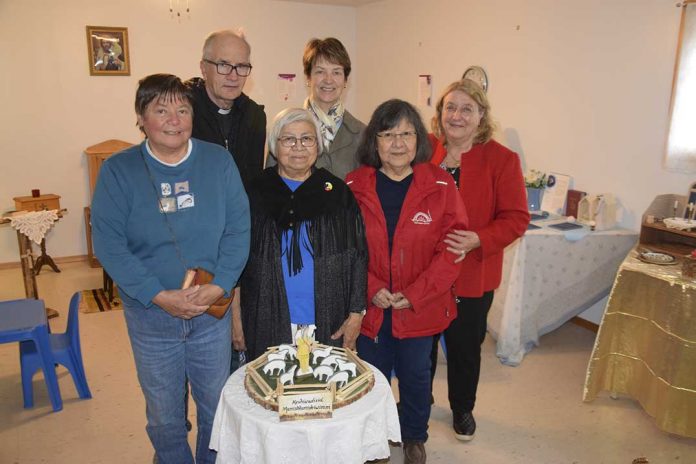by Julie Assiniwe and Mary Buie
M’CHIGEENG – A ‘lunch and learn’ was held for M’Chigeeng Health Centre staff and community members last week and hosted by Julie Assiniwe (interim community health nurse) where everyone was encouraged to wear pink.
Participants varied from expectant mothers to young and older women, men and children. Health information pertaining to risk factors, signs and symptoms, mammography, myth versus facts, lifestyle choices, risk reduction and other resources were offered. To make a tough topic fun and enjoyable all were invited to paint pumpkins pink while Kagawong’s Mary Buie shared her personal breast cancer story.
Did you know that every day 70 Canadians will hear the words “you have breast cancer?” One in eight women will develop breast cancer in their lifetime. It is the most common cancer among Canadian women and the second leading cause of death from cancer in Canadian women. It can also occur in men. In 2019, 26,900 women will be diagnosed with breast cancer—this represents 25 percent of all new cancer cases in women in 2019. Five thousand women will die of breast cancer representing 13 percent of all cancer deaths in women in 2019. To put it starkly, one in 33 women will die of it. And of the 230 men to be diagnosed with breast cancer, 55 will die of it.
Breast cancer can be detected by breast exam, mammogram, ultrasound and MRI. From 50 years of age the standard in Ontario is a mammogram every two years or sooner if risk factors are present. One risk factor is dense breast tissue.
“I had dense breasts identified on mammogram in 2011 in my 60s so therefore was scheduled for mammogram in September 2012,” Ms. Buie explained to the group. “I found my breast cancer in August 2012 and it was large, five centimetres, and under my nipple so very hard to detect. Breasts with more than 50 percent glands and fibrous tissue are called dense. It is harder for doctors to spot because both cancer and dense breast tissue appear white on mammogram. So mammograms are only 50 percent accurate in women with the densest breasts as a camouflage effect is created.”
“If you have dense breasts you should have a breast ultrasound as well,” Ms. Buie continued. “Now that it is known that cancers can be missed by just having a mammogram, some provinces have standard ultrasound practices as well. Breast screening for all women in Alberta includes mammogram and ultrasound. I am giving you information about dense breasts because until I read that on my mammogram report I did not know the significance of it. All mammogram reporting should state if there is dense breast tissue present.”
Dense breasts are common in women ages 40-74 and of those women, 43 percent have dense breasts—they become less dense and more fatty with age.
Fifty-six percent of women in their 40s have dense breasts; 37 percent in their 50s and 27 percent in their 60s. Because there has been little awareness of risk factors for breast cancer with this situation, a Dense Breasts Canada group has been formed. Go to DenseBreastsCanada.ca to access information.
“So, women, it is up to us to advocate for ourselves so that all tests necessary are available to us to detect breast cancers as early as possible,” Ms. Buie added. “Please share this information as knowledge keeps us healthy.”





